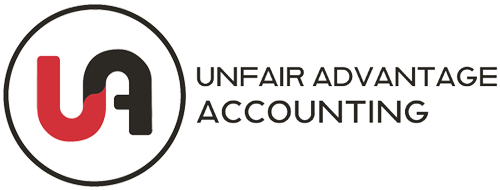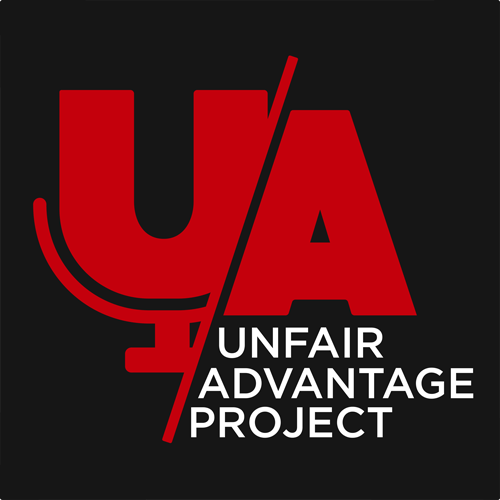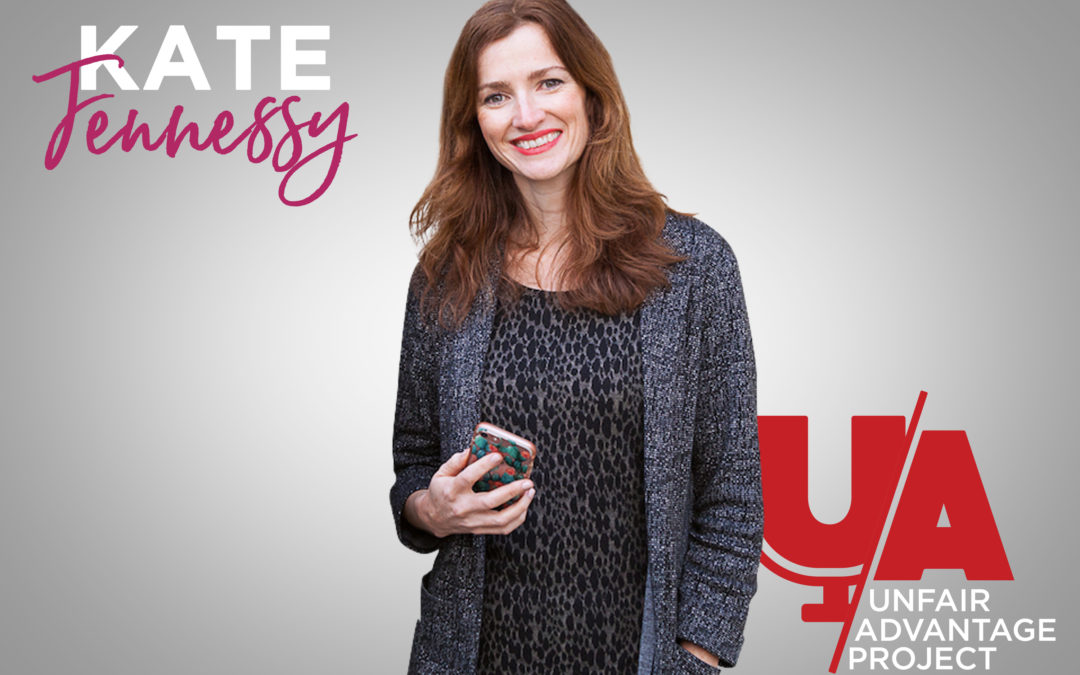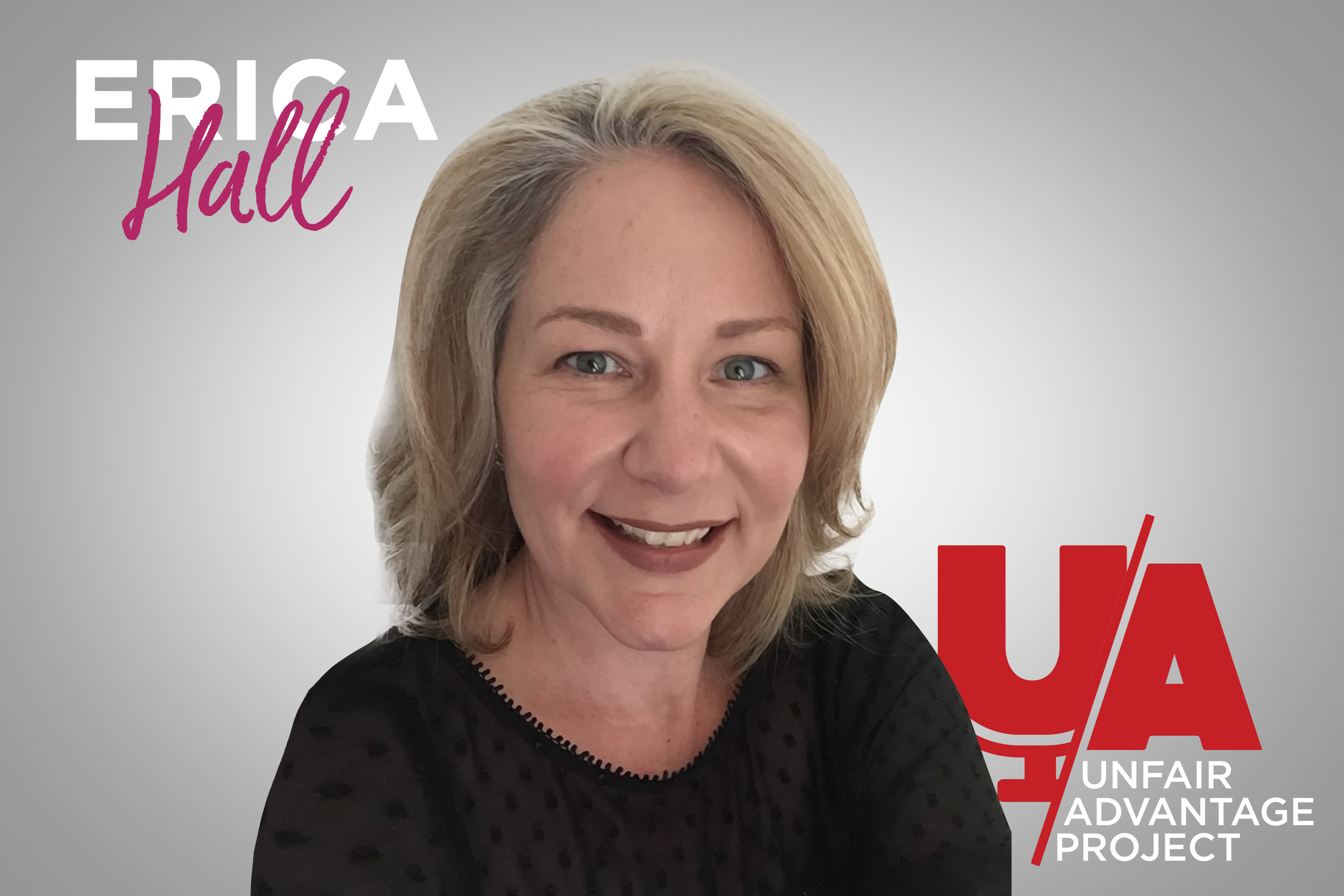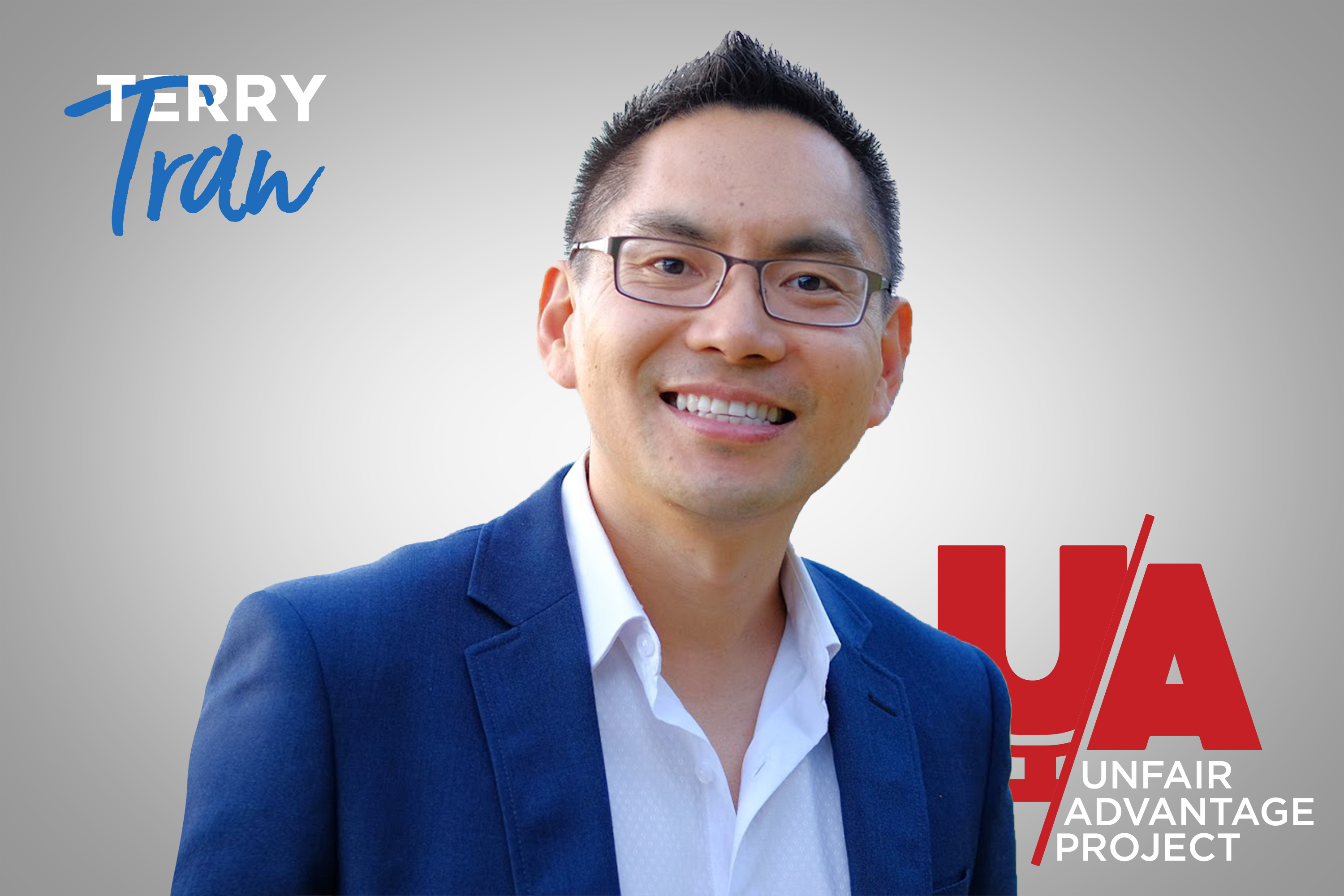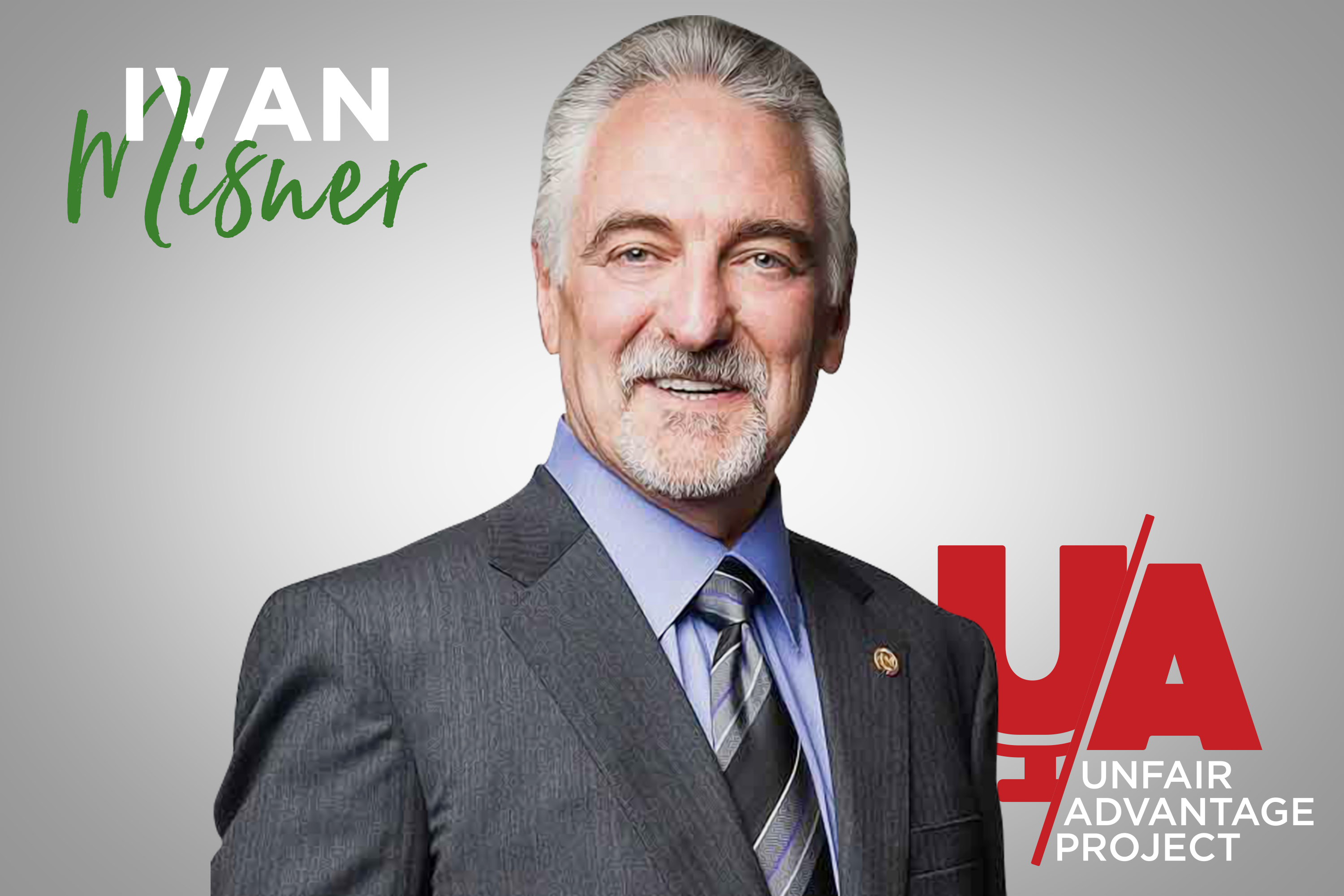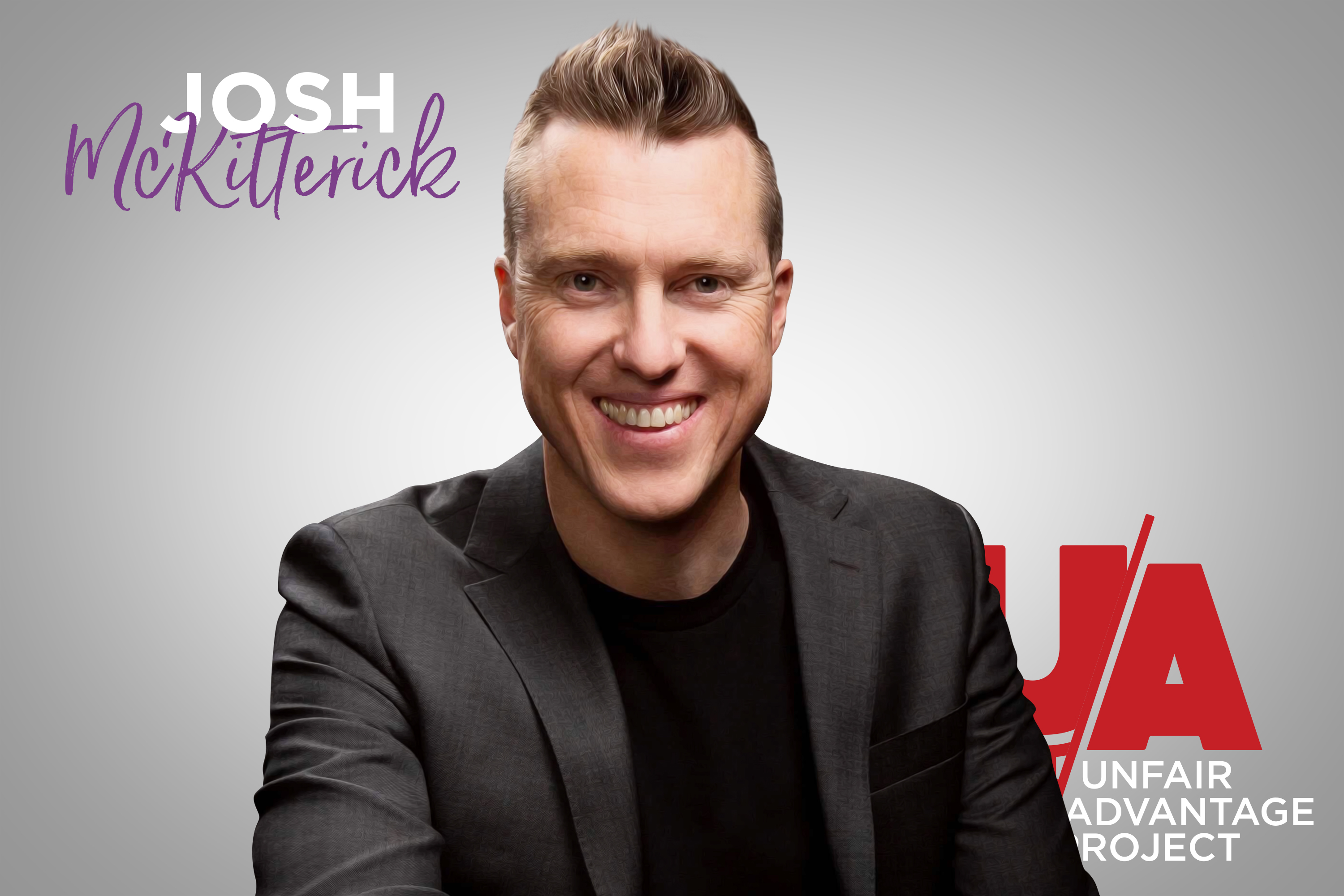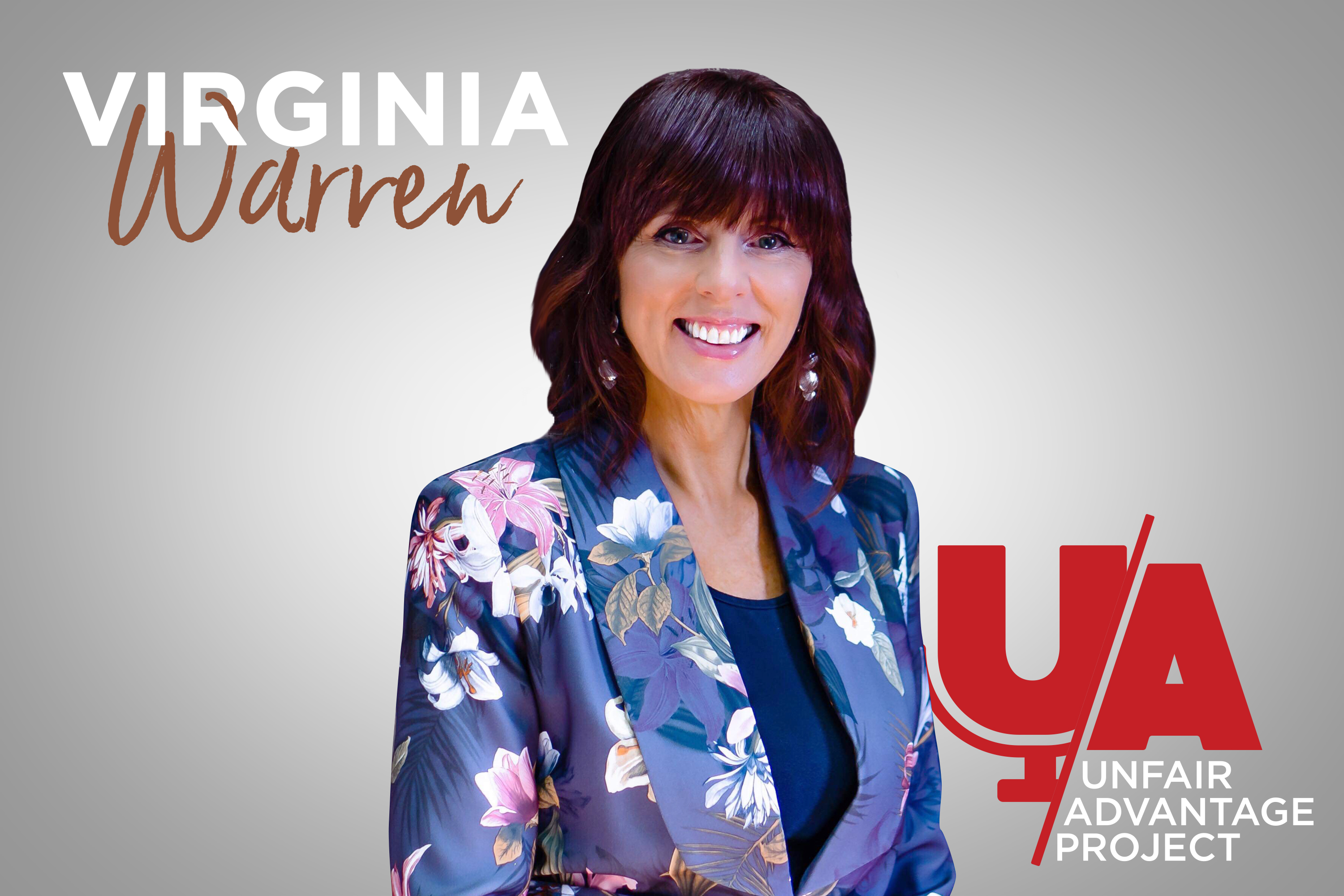Podcast: Play in new window | Download
Subscribe: Apple Podcasts | Google Podcasts | RSS
Show Notes:
How is being on social advantageous? [01:25]
What to do in dealing with competitors on social? [01:35]
What are the commonly used social platforms? [04:34]
Why is social considered age-driven? [11:23]
Kate gives examples of how social is misused. [14:05]
Which platforms have the biggest opportunities for startups? [16:40]
She provides a way to turn around the fear of being on social. [19:40]
What can startups do during pre-launch. [23:11]
What does influence says on marketing? [24:54]
Why is relying so much on social unhealthy? [30:09]
Why should you take advantage of Facebook ads and boosting post? [31:39]
She stresses about not getting numbers for nothing. [33:49]
Who is the right audience? [43:53]
Kate gives tips on how to deal with bad day on social. [46:21]
Follow Kate Fennessy:
Website – https://bit.ly/2KsrFsU
Facebook – https://bit.ly/2MP3wdx
LinkedIn – https://bit.ly/2tResQu
Twitter – https://bit.ly/2NppCEz
Instagram – https://bit.ly/2yMp6NC
Narrator: Welcome to the Unfair Advantage Project - unique perspectives, practical insights, and unexpected discoveries directly focus on giving you the unfair advantage. Introducing your hosts Nadia Hughes and Terence Toh.
Terence: Hi everyone and welcome to the Unfair Advantage Project. I'm Terence Toh., I'm the founder and managing director of StrategiQ Corporation. And welcome to my co-host here Nadia.
Nadia: Good morning everybody. And it's Nadia Hughes from Smart Business Solutions and I'm happy to be here.
Terence: Alright. And today we have special guest Kate Fennessy from Paper Boat Digital back again. And today we're going to talk a little bit about launching social for start-ups and I guess some of this will also apply to starting up your social if you already established business. So let's get into it. What do you have to share with us today Kate?
Kate: Good morning! Yes we're going to talk about launching social from scratch which would either happen if you, for some reason, didn't have any social still in 2018 which I do find a bit shocking. But I am, I understand that that could be the case. Or if you are a start-up which is probably quite common these days because I think start-ups are popular and there's a lot of people doing, launching a new idea or business or product or service so that's what we're kind of going to talk about. So I guess that's what I wanted to sort of, the way I wanted to set it up is that there are a lot of advantages actually. And of course challenges to starting from scratch. So I might just talk about some of the advantages because it is 2018. I guess one advantage you've got if you're absolutely starting from scratch is you've got the whole lay of the land in front of you to assess. So if you're going into a certain market where there's existing competitors, the first thing you can do is have a good sniff around and a good review and analyze your competition. You can see exactly what they're doing, what their positioning is. And this is what I do with pretty much all my clients, anyway, is I have a landscape review because it's really helpful to know who's doing what, what platforms are they on, what content strategy are they using. Is it video? Is it advertising really heavily? Are they going strong with SEO/SEM? Or are they all over Instagram but not on Facebook? So you can have a real advantage by being able to understand the landscape and then figuring out an opportunity where you can fit in and slotting in and take ownership of a particular position. So back in the days when I was in advertising, we would do that quite formally that process. We'd literally get out an X and Y graph and really plot all the competitors where they fitted according to certain things. It might be price or it might be perception. Whatever value you want to assess, you can really go deep into that if you want because it's all there for you to look at. But at a very basic level, I would do something like write down five or six competitors that are relevant and just have a little snapshot check of what social platforms they're on, what they're doing. So you might just look at writing down they've got a thousand followers on Facebook and 10 on Instagram and they have a YouTube channel with 100 subscribers and just make a quick note of what are they doing. To sum it up because then it gives you a chance to see opportunities and positioning. So does that sort of make sense?
Nadia: Absolutely you just speak my lingo. You basically need to become your own intelligence and infiltrate into your enemies’ line and have a look what the gaps are there.
Kate: Of course.
Nadia: And fill these gaps.
Kate: Yeah look for a gap. It doesn't mean you can't do anything they're doing but it just means that you have the opportunity to be a bit smarter and step into the arena in a way that's going to be a bit better for you in the long run. So, I think that kind of thing is important anyway. And then that way your platform selection can be.
Nadia: So basically, what you get into there, have a look what your competitors are doing and pay attention to what they are not doing.
Kate: Correct.
Nadia: And do whatever they do better and start doing what they are not doing.
Kate: Yeah.
Nadia: In the simple language.
Kate: You might sidestep something they're doing really well and try something else or often you'll find if you do a review like that you might find one platform’s being neglected by your sector or by your competitors. Often it will be Instagram depending on what area you’re looking into. So often when I do these reviews for clients you find that Instagram that the competitors either aren't there or they're not they're in a big way which means that could be a big focus for you.
Nadia: And if I ask you to recap. Each platform is particularly well working for certain type. Can you give just very. Can we quickly brush up on the basics of each platform.
Kate: And what works well for?
Nadia: Yes.
Kate: Sure. All right. So starting with Facebook which is the most commonly used platform for Australian social media users still by a long shot. Facebook is good because it's very flexible. It's a flexible platform with lots of features. So Facebook works really well because you can have video on it. You can have live video on it. You can have links to external websites on it. You can do lots of cool stuff with e-commerce now to do with Facebook ads. And you can pics on your website and do really clever e-commerce strategies. So Facebook is kind of a catch-fall for most Brit businesses and brands because it's where your customers are. Even if you're in B2B, your target audience is still likely to be on Facebook because I think it's 94 percent of Australian social media users are on Facebook. And that's 8 out of 10 Aussies. So of the eight out of 10 Aussies on social, 94 percent of them are on Facebook. Yeah I guess and you've got events. You can use so many elements of that platform that it would almost be a no brainer for most people to use it. When we start going onto more niche platforms. So Instagram I would say depending on your business and what imagery you have access to Instagram is like the hot platform to be on. That's where, that's had the fastest growth trajectory of any platform in terms of its popularity is rising like really fast. And if you want to future-proof your brand and have younger people understand who you are and connect with, Instagram is a really good platform. And because Facebook owns Instagram and they're increasingly integrated, particularly at the back end, I think that those two together can be a really powerful duo. And within Instagram I think stories are sort of the hot property within that platform as well.
Nadia: How does this stories work? I actually really clumsy around this story. Trying really just for my personal just process simply my personal profile to try and before I will start doing anything for the business.
Kate: So Instagram was probably quite aware of Snapchat very fast rise in popularity when they developed stories. It essentially knocked Snapchat off that trajectory pretty quickly. So I think it was within a year more people were watching stories than the whole of Snapchat’s user base. So it did work. Basically, when you're on Instagram and you got your feed, you're scrolling through your feet up the top now a little circles of people who've made the story. So a story is it's simply a good way to get noticed above, literally because it sits above the feed. Basically a story similar to the sort of Snapchat concept is a video or photo message you can create, single ones and they'll be sort of put together. So just say you take five photos over the course of the day, it will be shown. They'll flip from one photo to the next and then end almost like a video. And then they disappear after 24 hours. So they're meant to be snapshots. They're great for showing something more rough and ready than what you'd be prepared to put on your actual feed. So if you've got an event on that's a great time to do a story or some people use stories and talk direct to camera and they use them like they would a YouTube channel. So you can see all sorts of stuff in stories. Video is pretty common. But for photography, a mix of photo and video is what you see. But it just puts you ahead of the pack because it's still not that commonly used by businesses and the people who are really good at them tend to be building their audiences more quickly. It doesn't trump the algorithm so much as it just another access point for people to find you. It tends to be like where I go to to just see what's fresh today. It's a real sense of in the now which people like yeah.
Terence: So for someone starting out with starting a business or just starting-up in you know with their social media.
Kate: Yeah.
Terence: Is there a simple way for them to choose which platform to start with? Do they need to go and start with all platforms or are they better off to start with one platform? Choose one and how do they choose that?
Kate: Yeah. So just to finish quickly so the other main platforms. Twitter obviously still pretty popular in Australia but it's pretty neat. Twitter fits particularly things like journalists, news. If you're a commentator of things, that's what Twitter is great for. Watching TV shows making a little quip. Twitter tends to be for the verbal amongst us. So it fits all those kind of literary sectors better. And then Pinterest is all about image it's almost the opposite. So Pinterest is you think of an average person trying to collect photos for their home renovation. That's what Pinterest is great for. It's visual, it's absolutely visual. It's like a visual search engine that's what Pinterest is. Snapchat is definitely sort of sits with the younger people and I don't think so far brands have had a huge amount of success trying to infiltrate that platform. I think young people are pretty savvy with brands and they're not that interested. LinkedIn I'll just mention. LinkedIn was actually the first social media platform I did some research in my book and realize that at launch before Facebook which is sort of funny. But LinkedIn is great. It's just. LinkedIn is like Facebook for business only. It's like Facebook. No offense but a bit more boring. There's a lot more content. There's a lot of room on LinkedIn though. And one thing to keep in mind for LinkedIn is it's much less competitive to get your content aired. So LinkedIn is also can be a really smart choice. YouTube I wouldn't sort of consider social media but the YouTube is obviously home for videos. And it's a video search engine as well. So to answer your question Terence, I would say definitely do not try and cover all your bases. I think a lot of businesses make this mistake and I see this all the time where they try and cover every single one. There is no point being on Twitter if you don't use Twitter the way it's designed to be used which is that you're active, you're commentating, you're responding and having conversation. If you're going to have a conversation, if you don't love that phone don't go on it because it's just a waste of time. You just end up sounding like a robot. I'm not a fan, and it's came up last, I'm not a fan of automation in the sense of like automation that inspires laziness. So I would never suggest you just go I'm going to order a tweet from my other content. No don't bother. Just don't be there. Either be there and be present or don't be there. So for me, each platform choice would often come down to probably a combination of Facebook, Instagram and LinkedIn for most businesses. Twitter if it's really relevant. If you're in news, media, journalism, TV. Yes, definitely Twitter. Pinterest if you're in home, beauty, lifestyle stuff you’ve got lots of beautiful images, yes go for Pinterest. But for most people Facebook and Instagram is probably what you'll end up selecting. Yeah.
Nadia: And that you just mentioned that it’s also aged-driven…
Kate: Yeah.
Nadia: and future-proof your business. So if I want to future-proof I would go for Instagram and probably Snapchat wouldn't be a really good platform for me at all. Apart from if I do want to create the group and have a constant audience.
Kate: If your target market is Gen. What’s under millennial? They’re called Gen Z now I think, the digital natives. Yeah they're sort of really young kids today then yes you would look at snapchat. It's just I don't know what strategy you'd use. You'd have to sort of have a think about that other than just sharing content. It depends. But I think Instagram is a bit more easier for businesses to get their heads around. It's not just young people.
Nadia: And we're talking here in Australian context.
Kate: Yeah
Nadia: Because if I go overseas it would change. The way I will be using media would change. So if you have international clients and you’re aiming for wider view, probably this strategy won't be applicable.
Kate: It's probably quite similar. Like I know for example in the US Pinterest is huge. So you might flip Pinterest or you might pop Pinterest higher up your list. And so if you are looking at other territories yet do a little bit of research find out what the popular platforms are and which demographic because all that data are out there. In Australia we have a report called The Census Social Media Report that they've done for about five or six years. And that will tell you exactly who is on what platform – gender, by state, by age. So you can really find that information pretty easily and the same for internationally. So yeah for me less is more with platforms and in most cases Facebook, Instagram, LinkedIn are probably going to be in the mix. Twitter or Pinterest if it's relevant to your audience. So it's really thinking about audience not thinking about what you like necessarily. Yeah
Terence: Probably understanding the platform, the purpose of the platform, who is on it. And then of course understanding how to actually use it.
Kate: Yeah, and that's right. I’m bringing it back to the ability to look at your competition is where that you can really refine that choice because you might look at your competition and say well they're really big on, they have a Facebook group. I'm going to really focus on Instagram. That decision might help you to select your key platform.
Nadia: And if I just ask to name a few most misuses you have seen across the platform, what would you identify? Would have you seen on Facebook not to do? What you have seen on Instagram not to do?
Kate: Yeah.
Nadia: And what have you seen on some.
Kate: Great question Nadia. I think we mentioned this last time. What I see on Facebook is people using too many hashtags. They've pushed content from Instagram with 20 hashtags, you don't need it on Facebook. It looks silly. So you don't do it. It's that laziness automation issue that I have. Same thing if I see absolute auto tweets. Sometimes I've seen a client’s account. I look at their content. Not one tweet, not one comment, nothing. Why do it? Just drives me nuts. Because it's like if you're not getting any response, leave. It's like going to a party and you're just standing in the corner talking to the wall. Just go. You don’t look good. Just don't be there. So it's, most of my gripes comes from automation. People thinking I'm going to save time by automating this process but really just coming across robotically. LinkedIn. What do I say with LinkedIn? People on LinkedIn don't put a lot of effort into how things look so maybe. And this can be true for Facebook too. Making sure that the image that's pulled through on a link for a thumbnail is good. Making sure that the post looks pretty. Like on LinkedIn, you have a chance to stand out. Don't use really tired stock imagery on LinkedIn because everyone else is. Be a bit more aware of how your post looks. The main thing with Instagram that people still do is they post ugly photos to Instagram. Don't post a blurry, boring photo on Instagram. No one cares. I have a real gripe with. No offense to anyone out there who does this. But that eyebrow eyelash industry often does these horrid closeups of women's freshly waxed eyebrows. I don't want to see red raw skin eyebrow on my Instagram. Yuck! Put it on a story. That's fine for a story.
Nadia: It’s probably more appropriate for medical studies.
Kate: Oh that’s just ugly. Instagram is the last place on earth where everything can be beautiful. Just leave it to be beautiful. Don't put ugly, weird things on there.
Nadia: Well there is some beauty in ugliness. And some French ancient. French sort of. Well they’re not ancient but the point will give is you.
Kate: I know but I just mean like your feed. What you actually put on your Instagram is like a coffee table book. It should be your best moments. Put all the really other stuff on stories. Keep it to be really, it just should be ascetically pleasing because that’s what it is for. So I still often see businesses put photos that I think that is not Instagram worthy. Do not put that there. Put it somewhere else. Sorry if I sounded a bit passionate there but I just. To me that’s not using the platform correctly.
Terence: Where do you see the biggest opportunities for someone to stepping into these platforms? Where are the biggest opportunities right now?
Kate: Instagram probably. I think. And Facebook ads. I have to admit, I still find it quite shocking that people don't take advantage of Facebook ads. When I went to the social media conference in San Diego last year, they said only 7 percent of businesses are using Facebook ads. I don't know if that was a global figure or an American figure but just by looking at the businesses in this area, I'm quite tuned into the morning Peninsula area. Not a lot of them use ads. I think ads are so effective, so relatively inexpensive. And because of the way that you can now work Instagram with Facebook, they can be so effective. So yeah Instagram and ads. And then I'd also add video to that list as another opportunity. I think a lot of people are shy with video or not confident or not willing to have a go. Not everyone has that digital mindset of just having a go. So they probably unidentified the three key opportunities. Video, Instagram itself including stories and ads on Facebook.
So you pave you’re selfish right now and I am selfish and ask you well there is a perfect start-up. Example of, the unfair advantage, you right now part of and you are creative director as well. So would there forever a date. I hope they will stack this creative director title for you. What would you recommend for us straight away? We haven’t, we are just about to launch. We’re jumping into the ocean of this social media. I am petrified. Would you hold my hand and just take me gently through? What would you tell me?
Kate: Well first don't be petrified. So, that's a common actually Nadia. I'm glad you said that because a lot of people approaching social, particularly those in the camp who they don't have social even though they're in existing business, they are scared.
Nadia: You know it's very comfortable to live under the rock.
Kate: Yeah and look.
Nadia: And then now I feel very exposed like a clamp who’s out of shell. And now here you are. You went in there and it's a complete out of my zone at the moment because I spent so long not being known and living very sheltered life.
Kate: I think that's a really valid point and I find a lot of my clients who are in their 40s and 50s…
Nadia: Thank you!
Kate: Sorry.
Nadia: Hahaha!
Terence: Hahaha!
Kate: have the same things although they don't express it as honestly as you just have. They are fearful. I've had that from many years ago. Peters was a client of mine. They were never on social at all. This is in advertising and that.
Nadia: Also the fact that I can't spell to save myself really puts a lot of pressure on me. And people will recognize me by my, I will substitute like launch with lunch. I mix words as well because they all sound similar to me.
Kate: A lot of people even with English as their native language are not great spellers or are not great at grammar. Writing is not their forte. So yeah it is expecting.
Nadia: Well their first language must be Bogan so It’s fine.
Kate: Possibly. Look up. What I would say is acknowledge that fear but try and start to turn that around. If that's the first thing you do I think that's well worth it. Because you've got to remember social is just the digital grapevine. Humans have always talked to each other about brands and businesses. We've always had word of mouth that is never going to change. We've always had recommendation, we've always had chit chat about brands. It's just that now it's much more accessible to everyone including the brand. And now the brand can be part of that chit chat. So be in it. Don't be afraid. It does feel a bit weird because brands these days do need to be a bit more vulnerable. They do, people want to see more. They don't want to buy it. They're no longer listening to the old style of traditional media, broadcast message, you just take it. We are this, you accept it. No. People now can ask back. Are you like that but do you do this? And why aren’t that? So acknowledge and embrace the two way nature of social media. And do what is comfortable for you. Not everyone's going to be picking up opening a YouTube channel and just creating you know content. Not everyone speaks directly to stories. I don't, for example. I'm a little, that’s just not my nature. But I've got friends who just pick up their phone and talk constantly into stories and they do it.
Nadia: It's interesting to watch them. You think, you think it like we are on opposite side of the camp. Because I am already fatigue from all these talking heads in there Facebook.
Kate: They’ve got a lot of people like it and they are connecting to the right people.
Nadia: I believe that there are some people liking it.
Kate: Well lot of people like it. A lot of people. And a lot of younger people now, that's what they listen to. They listen to people who have YouTube channels and who do their own content so there's certainly an audience for all of that. But, yes what I'm saying is first of all face the fear and realize it's an opportunity for you to communicate about your business in a more sort of in-depth way than ever before because that's what people want. So the next thing I would say and I was thinking this on the way here is the biggest opportunity, a start-up in particular has, because people like storytelling, right? They want to connect to a brand in a more authentic way in the past. They want to know what makes you tick, what you stand for, who you are. It's more important these days. So the advantage that a startup has is you can actually tell the story of your business starting. That's your first narrative. So for example, with a podcast like this, there's people are going to want to know why did you start it. Who are you guys? And why are you doing this? Why have you set up a studio for you? Why investing all this time? How did you come up with it? So that is actually a unique story that your competitors can't necessarily tell as well because it's happening live. So essentially, in terms of ways to start with a bang, one thing you can do is a teaser campaign. So you can start collecting content from before launch and posting it. So a good local example of that was the Cheeky Squire that opened up in Frankston. They didn't do it to hardcore but I did notice it at the time and they did it well. They launched before they opened, before the doors ever opened. There were great photos being taken and posted of the build. So all they did was a simple strategy of like a pot of beer or a bottle of beer in the foreground and the building works in the background. And they were just post it from time to time saying we're getting close. That's a good teaser campaign.
Nadia: We are getting closer as well and it’s getting a bit tingly to go in there this our but writing a story, pre-commencement and all these.
Kate: Sharing at pre-launch is one thing you can do that your competitors can't do.
Nadia: We kind of need two goals. Start writing quickly.
Kate: Yeah. Well that’s great. You’re getting farther as taking today.
Nadia: We love to launch.
Kate: I mention I took a photo last week. The selfie I took and I mentioned it on my own media and people were saying already Oh I want to hear that podcast. So you'll be surprised how many people.
Nadia: Terence mentioned that a medium can. People say where is it?
Kate: Cause they feel the buzz. So that's one strategy well I call it teaser
Nadia: Let’s call it build a buzz.
Kate: Build a buzz or a teaser campaign.
Nadia: Around non-existent business. Around non-existent.
Kate: No it's not a non-existent business, it's around your business story.
Nadia: Basically, what it's called, gestation period? When you are just about to give birth to something.
Kate: Yes.
Nadia: Yeah? Oh it’s just my term so. If we are in gestation, how is the pregnancy going? Terence, you alright?
Terence: I'm not a good pregnant person.
Nadia: Well you just about, I will take you through these. I had a few of those experiences. And during this building up, do you think about name? It’s like a baby, it is.
Kate: Yes, that's a good analogy Nadia.
Nadia: Oh great! I came up with it. And what there's a baby we need to do?
Kate: Well think about a pregnant woman. What she would share on social media? I'm pregnant. There's the I'm pregnant story. There’s the it's a girl.
Nadia: You’re shooting today. I'm pregnant. Terence.
Terence: Oh whatever on there.
Kate: That's a baby shower. That’s pre-launch event really, pre-baby.
Nadia: We should have baby shower. Where are we having a baby shower?
Kate: That's I’m have to leave to you guys to discuss.
Nadia: Oh my gosh!
Kate: But this is good to think about. It's a good analogy, I like it. So that's one strategy. When I think again of local businesses, another strategy which we're going to dive into next week for our third in this series is influence in marketing. So there was a new restaurant, I haven’t still been to this two new businesses that I can absolutely tell you I learnt through influences. One is Rebel Donuts in Mornington. So Helen and Lisa who are two Frankston women who have a blog called Mama Loves to Share. They’re on Instagram, Facebook.
Nadia: I have seen them.
Kate: Yeah they're lovely. They're really nice. Well I haven’t met Lisa actually but Helen's lovely.
Nadia: Oh we just can reach out and say Hi.
Kate: Well, the thing is that they went down to Rebel, I think without being paid. It wasn't a sponsorship deal. They just happened to sort of stumble upon it. And they ended up generating so much awareness for the brand. But Helen just did a simple video like oh my god check out this new store and it went off. They got enormous traffic just from that post similar with, there’s a Japanese restaurant in Beach Street that opened that I know about through them again because she told the story. She was like “oh my God! I went to this restaurant all you can eat buffet it's really good value.”. So it's in my head as I must go to that Japanese restaurant because Helen recommended it.
Nadia: What does a key person is who is recommended it?
Kate: Yeah, they might not either fit.
Nadia: I thought it’s easy for you to listen.
Kate: Well I just respect. I just, she's in my radar. I listen to her opinion. Yeah.
Nadia: Okay.
Kate: Yeah.
Nadia: It’s just be knowing your, who is listening to you. Because if Nadia come out and start talking about doughnuts, I don't think I would be much of what.
Kate: Well the difference is these girls in this case have followers. They have a good-sized follower base so they make an impact. So that's something to think about and influences could come in all shapes and forms. Influences of course with you guys could be your guests now. Not so much me because I'm not in that game but if you've got guests with big following, there an influencer. So if you've got a guest who's got thousands of LinkedIn followers, one post from them could have a really big impact. But you've got to be ready for that. So you got to tell them hey I want you to say this and I want you to send people here. It would be sort of a waste if they just threw it out into the air with nothing for people to connect to. So it'd be good if that influencer just say you had a guest with, I'm just guessing but, like Lance Burdett. He's a big LinkedIn player. So someone like him, he's an influencer. So therefor if you had a website linked to give him or just at the very least, a Facebook page URL or an Instagram handle at least people can then catch on to you through him. You got to give that influence a something to go.
Nadia: Basically, a credible address where people can come and find instead of just mention us.
Kate: Look mentions help but to make the use of that, you'd want yeah. So back to you guys and back to sort of ways to start from scratch.
Nadia: Yes.
Kate: That’s alright. I would be capturing content. And I have said this to both of you, I would be capturing content every single time you have a guest. Whether they're an influencer or not. That could easily on the one hand just be a teaser campaign. Just be a photo saying today we spoke with Kate about launching social for start-ups. Today we spoke with Lance about Blah. Today we spoke with James about blah. Like so that's a nice simple way to tease. So that your Instagram account, even though you haven't launched the podcast, could easily just be six photos from the six episodes you've recorded.
Nadia: So listen up kids, moms and dads. We just missed the great opportunity.
Kate: Hahaha that’s okay.
Nadia: We have all those great speakers on our broadcast and we have not done any of this.
Kate: That’s okay.
Nadia: So live and learn and I think what to do now, we have to compensate for that
Kate: Always take a photo. Yeah.
Nadia: But we missed this one. So can I catch up on some?
Kate: Easy. Go and just email them and say “hey can you send us a photo?” Easy. No problem. Especially the ones with a big following will have probably lovely professional photos. You could easily put in your Instagram and or Facebook and or LinkedIn a photo of. Did you interview Lance?
Nadia: Yes!
Terence: Yes.
Nadia: He is real. He was sitting right at this chair.
Kate: Awesome. Lance perfect opportunity but you who have an awesome headshot you can use. Pop him on. We interviewed Lance on this date. It's coming out on this date or you're going to want to hear this one. Tease it. He talks about X Y and Z. Easy done. Nothing's ever lost Nadi. That's the beauty of digital. It's very flexible.
Nadia: Wow!
Kate: It's true. There's always a way.
Nadia: So, start building cup tea us.
Kate: Yeah. Just a couple of other things I wanted to cover. So when I was home, the advantages of being a start-up or starting from scratch, like I said it's the lay of the land, you can be quite strategic. Choosing your positioning, choosing your platforms right. But there are a few challenges as well. It is harder to build an audience now probably than ever before. It's more competitive on Facebook. It's even more competitive on Instagram now. Gone are the days where everyone was just getting hundreds of likes for photos. It's hard to get now. And the other challenge would be, and I've seen this myself both in advertising and as Paper Boat, it can be a big cost resource wise or money wise and a big burden to run social when you're not getting income. Like depending on what you're doing. That's a pitfall as well. Sometimes you can think Oh my God I'm having to putting all this effort over here for a long-term play that can feel. I've had a few examples of clients both big and small who expect a lot from that early social. They're wanting social to carry the whole business success and that's going to set it up for failure. Social I'd be looking in terms of year one year two not month one month two.
Terence: Good point.
Kate: Right? And that's important and that's a point that's missed a lot of businesses still don't get that.
Terence: It's like starting a conversation. You're not going to go and just talk with someone and all of a sudden they want to use your services.
Kate: Correct. It's relationship building. That's the ultimate relationship building. And the other challenge might be, as you guys have just demonstrated, that when you're in the groups of a start-up, social may not be on your priority list. I'm sure you guys were rightly much more focused on building this studio, getting your content sorted out, your structure, getting your list sorted out. No wonder you didn't think to stop and take photos for social cause it's not in the forefront of people's minds. But the challenge is to start getting it to the forefront.
Kate: So be good created the Web is content?
Nadia: No, it's normal. It's normal for a business to be focused on business. That's normal. So don't feel bad about that. That's absolutely common. It's just that from where I sit content is everywhere and you should be aware of it all the time too. So do you want to hear some other ideas for like how to start with a bang?
Nadia: Yes of course.
Terence: Sure.
Kate: I would also say so we've talked about influence marketing and we've talked about a teaser campaign. So they're two pretty basic things potentially. Content capture ready for launch. We've talked about, that's part of the teaser thing. Another great way to start with a bang would be Facebook ads. And again, I think you're depending on what arena you're stepping into. It could be a really smart way to get to build an audience quickly.
Nadia: You have mentioned cost-effective because a lot of our start-ups they are very price conscious. What are we talking about?
Kate: Oh talking about like 100 dollars a month. Not much money at all. It will make a difference. I'm talking about even boosting a part. Just say you started your content on Facebook pre-launch and you, for one, you might do some posts that go well. Every time people like your posts, jump on and invite them to like your page. Invite all your friends and family to like it. That does help it. gives you a nice little base. And then if any posts do well which Facebook helpfully tells you. They have a little flame graphic and it says this post is performing 80 percent better than other posts.
Nadia: Yes, we have seen that before in smart business.
Kate: Yeah. That's right. And the reason they do that is because those are the good posts to boost.
Nadia: Another a question. Your page has to be liked at least a hundred times then you clicking on guest they say. What is it? How many likes you have to get into some completely different strata’s for you?
Kate: Depends on many factors. But yeah I would agree that a page with less than hundred likes looks very empty. A thousand’s a good number. If you can get over a thousand it starts to look like a bit of an endorsement of hey this is known, this is established. But it depends very much on your market. If you're really niche like dog pet treats for big dogs. That doesn’t make sense. But you know what I mean? You're not going to expect a big market.
Terence: I had one, underwater karate. That's a niche. That’s a different niche market.
Kate: Kind of cool though.
Nadia: It’s so niche that everybody wants to know about it.
Kate: And. But back to your like competitive landscape. Look at your competitors. So if you're competitors, you're top ones got 5000. That gives you a sense of what where you going to start.
Nadia: I'm just started thinking. One of my daughters has three thousand three hundred something friends on Facebook. How can I make them like me?
Kate: Are they your audience? Probably not.
Nadia: And that's exactly the point. So what I see.
Kate: So don't get numbers for nothing. And that's another pitfall to avoid. I'd prefer you to have three hundred, actually engaged real people who are relevant to business, then have three thousand randos. There’s no point.
Nadia: You said randos.
Kate: I did say randos.
Terence: Randos.
Nadia: I love this.
Terence: New word for the day.
Kate: Yeah. So don't get lost in numbers.
Nadia: It’s desperados and randos. They come to.
Kate: Forget them. Forget desperados and the randos.
Nadia: Well you have to be desperados to get randos.
Terence: Just go back to, you said boost a post?
Kate: Yes.
Terence: So I've heard that there are some negatives in boosting your posts directly from, oh sorry, without going into this business manager.
Kate: Yes, agreed.
Terence: Can we just, just so when I put information out there saying post the post we get always boosting the post and like that.
Kate: Yeah. Correct. That's a good point, thank you. I never boost posts in that way you're describing which is essentially Facebook makes it easy for you to just spend 20 bucks, 50 bucks, 100 bucks and not really know what you're doing. Always post a post from ads manager. The reason is and without going too far down this rabbit hole, there are some absolutely great ways you can do that quickly now so as in to create an effective well-targeted ad. So I just want to touch on this. There's a relatively new-ish feature on Facebook ads where you can create an audience from people who've engaged with your Facebook page in the last year. Who've engaged with your Instagram account in the last year. We already were able to engage with people who visited your website in the last 30 days, 60 days. But the combination of that is so effective. I use a pretty similar technique for my ads now. I use a Facebook engagement audience and Instagram engagement audience. I also use friends of people who like the page. I also chuck-in a look-a-like audience which means Facebook will find people similar to your audience. Those four things alone, and maybe chuck-in website if you've got traffic. Will almost guarantee a nine or ten.
Nadia: Sorry have you written the recipe of this method?
Kate: Will discuss it further.
Terence: Yeah, we can discuss it further.
Nadia: It looks like pinch of this pinch of that and that is the ingredients to create an effective boost.
Kate: But I also would add a few interests on top of all that. So for you guys, I wouldn't be doing that yet because you don't have the audience. So there's no point me adding people who like your Facebook and Instagram because it's not big enough yet. Down the track it will be. But for now, interests alone will also have factor in. So you might look at people who like Gary Vaynerchuk.
Terence: Gary Vaynerchuk.
Kate: or who like reach that pour that and who are interested in things that correspond with your content. So I guess to finish up that little thing, definitely never use the front. Always do ads properly because otherwise you're just wasting your money. But when it's set up properly like the ingredients I just described and I'll save that audience, you can very quickly go 20 bucks boost that post. And it just goes that a whole lot further. And it's always smart to boost a post that already does well. So that's one thing.
Nadia: Yeah it just you would think it's already doing well don’t worry about it.
Kate: Well but it’s the stats don't lie. So the stats will tell you if it's doing well. Yeah. I had a post somewhere you might know Grandma’s Puddings. Dane, she's a local as well. I help her with Facebook ads still. And she had a post there that went absolutely viral. Sometimes she shares recipes and they just go nuts because they're nostalgic. And I just message her and said hey we need to boost this. This is crazy. Like it's already gone so well so we just added another 25 or 50 bucks to it and its other messages are still flooding in. It just extends the life of it. Yeah.
Terence: There’s actually really good. I guess I'll mention it. There is a really good resource, a great podcast out there. Another podcast hope perpetual traffic rope burns Keith Krantz, I forgot his name, and Molly Pitman. And those guys that go really deep into Facebook marketing. So anyone who wants to go to Facebook.
Nadia: You and I should really go very deep into.
Terence: Now I listen to it and what we might do, see if we can meet with these guys, maybe if they are listening.
Nadia: Hi guys, would you like to come to our?
Terence: Now come and talk to us and share some things and for our audience as well.
Kate: Will if they do, just to solidify our theme. If you do get a really great guest like that, treat it like a separate campaign. Tease it out. Give people the link on your social. This is the podcast we have currently got. Yes, they are coming in a week. Ask people have questions. What do you want to know from these guys? Take the photos. Post that before the podcast goes live. Oh my God we met Keith, Molly and whoever else you said. That’s an opportunity. Sometimes a moment in your business can almost, is worthy of you really thinking about that same thought process if that makes sense. Treat it like an actual campaign that deserves its own launch because that could really kick goals for you guys. And then if that’s the case that you posted about perpetual traffic and you got a good response, boost it. Invite all the people who like that to like your page. So those opportunities for your business, at this early stage, they’re really cool. Just to finish off that list of what otherwise to start with a bang, a competition couldn't wouldn't go astray. An actual event. An offer. That doesn't necessarily apply to you guys but this is more if you're in the sort of a product business. You could start with “to celebrate our launch we are offering 20 percent across our whole range if you sign up to our email list” for example. So that's another way to start with a bang. Or depending again on what you're doing and who you are and what your budgets are, have an actual launch party. Like who doesn't want a party. A good thing about an actual launch is content. Actual launch plus professional photographer equals amazing content. Right now you guys, for example, you might just.
Terence: Sounds a lot of fun.
Kate: Well of course.
Nadia: I just can't wait to launch.
Kate: You could actually do a launch in six months time. You could do a launch on your first anniversary, oh sorry a party I mean. You might decide to give it go and build up this and build up that. And you might say in a year's time, we're going to look back to celebrate our first year anniversary of launching our podcast. And then, who do you invite? Guests. And who are they? Influences. Do you know what I mean? So that's actually really smart. And then but you'd also invite all the business people in the community who are relevant, who want to know about your podcast. And do not forget that vital ingredient - a professional photographer. If you go to the effort of making an event, get a professional photographer. Do not miss that opportunity because professional photos immediately elevate you. Blurry photos on a phone by a guest just won't cut it in those situations. Not saying that you're taking blurry photos. I just mean at a party I've often seen that. You'll see people taking lots of blurry and its.
Nadia: It's simply haze of party. It’s some sort of smoke.
Kate: It’s not the haze. You want someone in there whose pure focus to capture that event properly.
Terence: Actually video as well.
Kate: Absolutely. Video as well. Video all the more. And video itself is probably another way to start with a bang. A video ad would stand out. Video in general tends to be a little bit more costly. Higher cost and bigger efforts. Anything that is high cost and bigger effort will generally pay off. Yes. So that's probably my list of ideas for how to start with a bang. But yeah you can see that the good news Nadia, it's never too late. It really isn't. And also be creative. Have fun with it. But remember, you guys in particular, you have influencers sitting in this seat. Week after week. Use them. And tell them no to post. Don't go the extra mile to make it easy for them. So write to them. Thank you so much. You might even make it part of your actual routine - a post or pre-thing like “Hi! As part of it we'd love to shout out that you're on it next week.”.
Terence: Yeah. We really have it all of the positives of using social, right?
Kate: Yep.
Terence: Who shouldn't be using social?
Kate: In business?
Terence: Yeah.
Kate: Who shouldn't be using social? I say it’s a trick question.
Terence: Well I'm not going to give you the answer. Hahaha!
Kate: For me, if the Victoria Police can use social. if the ITO can use social, I can't really think of anyone who shouldn't be on social.
Nadia: Probably criminals.
Kate: Mick Gatto and all those guys, they've got a great profile. I would say, I think social is open to every human being. I don't know the answer to that.
Terence: Okay.
Kate: I don’t know. I mean a lot of people say B2B doesn't work on social. I don't agree. I think for every, it's not as easy. Service businesses are generally not as easy. Product’s easy because you got photos of product. And if you're in travel, beauty, fashion, socials are real easy, really easy. If you're not, it just means it might be a bit trickier. You might have to be more creative but I really can't think of anyone who shouldn't be on social unless maybe you're hiding your identity. That might be the one answer. If your business relies on you being anonymous. I know that that's not true either because some of my favorite accounts are anonymous. Fashion Critical is the most amazing account. I just love it so much. She's anonymous. She's got hundreds of thousands of followers. She just does savage assessments of red carpet fashion. God, I love it. I live for that. I live for her posts and she's anonymous so therefore the answer is no one cannot be on social. That's my official answer.
Nadia: As long as you're dealing with people, humans who has extension of arm.
Kate: No that is not true either because animals can be on social too. I follow a cat from a Northcutt video store. I love him. He's a little ginger cat and he wears bow tie.
Nadia: I doubt he press a little button with fur. I think your following his master.
Terence: I think where Nadia is going is that cats aren’t her audience.
Kate: Correct.
Terence: So people need to be your actual audience. I mean, I guess as a business, you need to have a product that people will buy or something that people will be interested in.
Kate: Yeah but I reckon there's an exception for just about every rule. So you just again to normalize it, it's just word of mouth gone digital. That's all it is. So you want people to know about you.
Nadia: It’s exponential as well. You can't control it and you can’t predict what will really happen.
Kate: No! And the platforms will come and go. And I think we mentioned that last time. In a year's time I might be saying oh my God it's all about Pinterest. It might be, I don't know. But the point is it's still communication. So yeah, don't be scared and be creative.
Nadia? Have you thought about inventing your own platform?
Kate: No God no. That sounds like a lot of hard work. I'm happy to be. I'm a communicator so I'll use whatever platforms come into town. That night. That sounds horrific. So I think I have maximum respect for people who do start-ups because it's hard work. And it's not something I'm doing. But yeah, no no. Yes thank you though. Thank you. Thanks for believing in me that I could. But no, not right now. Yeah. So that's pretty much what I wanted to cover.
Terence: Go!
Kate: Unless you have any more questions. But.
Nadia: We have plenty of questions. That's why you're going to be a regular on our podcast because social media evolves. It moves so fast.
Kate: It’s s true.
Nadia: What I like about you, you just keeping an eye on this all trends and changes and you keep your market informed. And I would like our listeners to benefit from it. That's all about unfair advantage so you have to give our listeners this advantage of knowledge.
Kate: I have to, I've been told. Yeah. As we said, I think the last topic for this sort of series is going to be influence in marketing. I think it's a really good one to get you ahead and now it's a huge advantage because it's not been widely used but the benefits can be massive.
Nadia: Again it was more extensional for prior talk. However, it introduces which are out there. But people know what they have to do but they don’t know how to do it or what the exact recipe for different things. And I think I'm less scared to go social now. However, I will always feel vulnerable because you’re putting yourself there.
Kate: Yeah.
Nadia: And you feel exposed you feel. People don't like you can almost. Self-esteem always can go down. Any little bit of hints on how to treat the bad day on Social?
Kate: How to manage a bad day on social? Have boundaries. I'm not suggesting everyone just sort of runs down the street naked so to speak. I think that you do what is comfortable. I guess one way to answer this is focus it on the audience. It doesn't have to necessarily be about you guys. For example, your content approach as this podcast could be all about your guests. You could barely mention yourself. I mean I would still have it there for context but some will go down the extreme if it's all about you guys and your journey. Others will go no it's all about our guests and others it's all about what our audience wants to learn. So it's up to you where you shine the spotlight.
Nadia: We are about our audience. We are around their needs and giving them this advantage. And basically reaching out people and influences which they can't afford on individual.
Kate: Great! So throw the spotlight there and that'll make you more comfortable. Yeah it's all a choice. You can do whatever you like. You can have boundaries around it but at the same time you created the podcast. People are going to want to know that story. But perhaps, some yeah, throw the spotlight onto your guests and your audience.
Nadia: Thank you!
Kate: That’s okay.
Terence: Cool. Alright. Well that was pretty cool. We might have launch up in social. social in general I think so. So thanks Kate. Kate Fennessy. How do people feel the best way for someone to find you?
Kate: I'm pretty active on stories on Instagram so find me on Instagram. Just search Paperboat Digital. Same with Facebook. They're probably the best ways to find me. But I'm out and about in the community as well. So network group. I pop-up sometimes here, there and everywhere. But yeah come and say hi. You are my social butterfly.
So if you look forward to having you back for the next few days yeah we'll talk about it. The marketing people though coming to cities and sharing everything with know. Thanks guys. Thanks.
Narrator: Thanks for listening to the Unfair Advantage Project. For more curated resources, visit us at unfairadvantageproject.com.
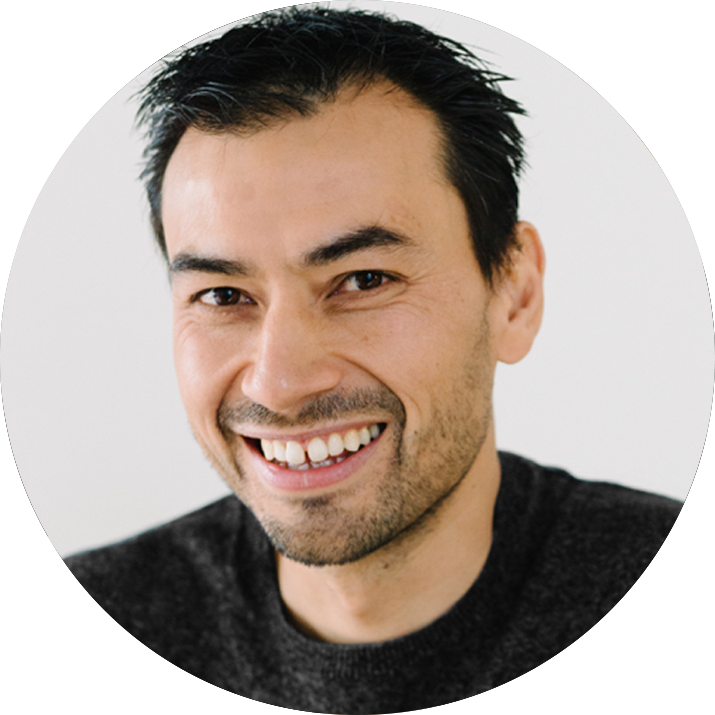 TERENCE TOH
TERENCE TOH
About Us
The Business Coach.
Terence is the founder and Managing Director of StrategiQ Corporation, a serial entrepreneur and experienced business operator who has founded, bought, grown and sold several … see more
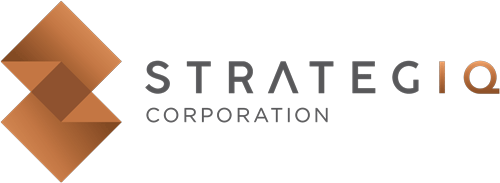
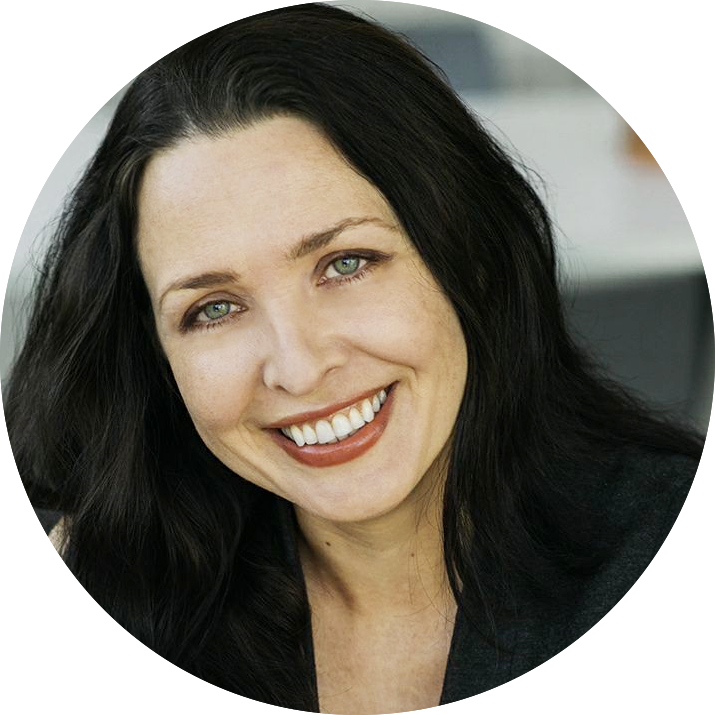 NADIA HUGHES
NADIA HUGHES
About Us
The Super Nerd.
Are you passionate about the ins and outs out of taxation legislation? With Nadia by your side, you don’t need to be. Accounting and financial planning isn’t just her … see more
